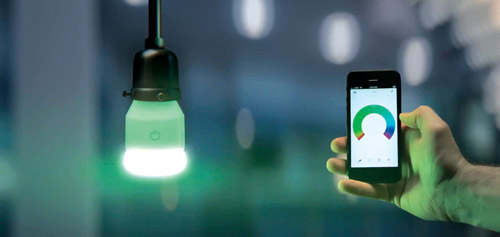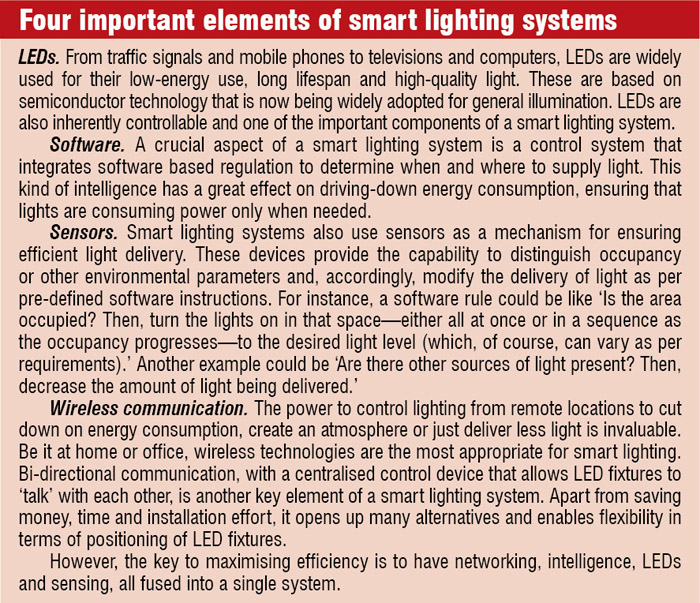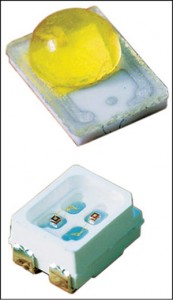For most of us, light bulbs are basically ‘turn on, turn off’ devices. But today, smart lighting is changing the way we think about them. Light emitting diodes (LEDs) especially change a lot of things when incorporated into intelligent lighting systems. These use the inherent capabilities of LEDs (for example, instant dimming and on/off) to maximise energy savings and provide facility management with unprecedented control and flexibility over how lighting is used throughout the life cycle of lighting installation. It is possible to change the colour and control brightness levels of lights with an app on your Android or iOS mobile phone, and program them based on your lifestyle with the help of LEDs, sensors and wireless technologies.

Smart lighting systems integrate LED fixtures (with occupancy and daylight sensors) and wirelessly network them, while providing a software management and reporting interface. There is a wide variety of technologies that are being experimented for smart lighting products. The usage of wireless-connected devices has become extensive over the past decade or so. Technologies such as ZigBee, Bluetooth and Wi-Fi can be found in a variety of devices and their uses has become widespread—thanks to the boom in the smartphone industry. Lighting products, too, can benefit from this shift towards wireless-connected systems, that is the Internet of Things.
Emergence of ZigBee
“A widely-accepted standard is ZigBee, which has a specific profile for lighting applications called ZigBee light link. This helps enable a complete network for lighting and provides the ability to monitor and control its parameters,” says Vikas Thawani, analog field applications engineer, Texas Instruments India. Given the number of mobile phones that have infiltrated the market, there is great interest from end-users to control lights using their mobile phones. Therefore, manufacturers are exploring wireless technologies, such as Bluetooth low-energy (LE) and Wi-Fi, on mobile phones. He adds, “We have actually seen a few customers work with Bluetooth LE, trying to interface their lights and provide an app for controlled lighting—turn on/off, dimming and occupancy based lighting. Wi-Fi is also being used to control the entire network of lighting.”
Why ZigBee
ZigBee light link gives the lighting industry a global standard for inter-operable and very easy-to-use consumer lighting and control products. “It allows consumers to gain wireless control over all their LED fixtures, light bulbs, timers, remotes and switches,” says Jaiwin Ranjit, partner, Enlite Energy Solutions. He adds, “Products using this standard will let consumers change lighting remotely to reflect ambiance, task or season, all the while managing energy-use and making their homes greener.”


LED, and the bottom of
the image shows a
high-power LED that
provides approximately
three-times-higher light
output and in a package
that is half the size of a
standard LED’s package
Products built using this standard are as easy-to-use as a common dimmer switch. Jitin Ranjit, managing partner, Enlite Energy Solutions informs, “The standard does not require any special devices to coordinate with the lighting network, making it both easy and intuitive for consumers to use every day.” He adds, “Plus, it makes adding or removing products to the lighting network quick and easy.”
“Technologies such as Wi-Fi and Bluetooth LE do not allow the creation of mesh networks in comparison with ZigBee. With ZigBee, one can have single-point control over an entire building,” informs Nishant Bhaskar, digital application engineer, Texas Instruments India. He adds, “People are trying to design gateways such as a Wi-Fi to ZigBee gateway, which facilitates total control over a network of lights via an Android phone, which is actually on ZigBee. People are experimenting and merging different technologies for smart lighting.”
“So far, ZigBee light link is highly used for smart lighting for the prime reason that it is a worldwide-accepted standard, specifically for lighting,” says Thawani.
Efforts to standardise
The lighting industry requires a consolidated proposition on the implementation of the kind of wireless technologies that they implement. The lack of an integrated approach leads to slower market adoption, confusion, incompatible products and could also limit the energy-saving potential. Smart meters, which fall under the category of wireless-controlled connected devices, are increasingly being adopted for metering applications. When smart lighting systems become part of these connected systems that involve smart meters, these will have to be compatible with the wireless connectivity technologies used by smart meters.






